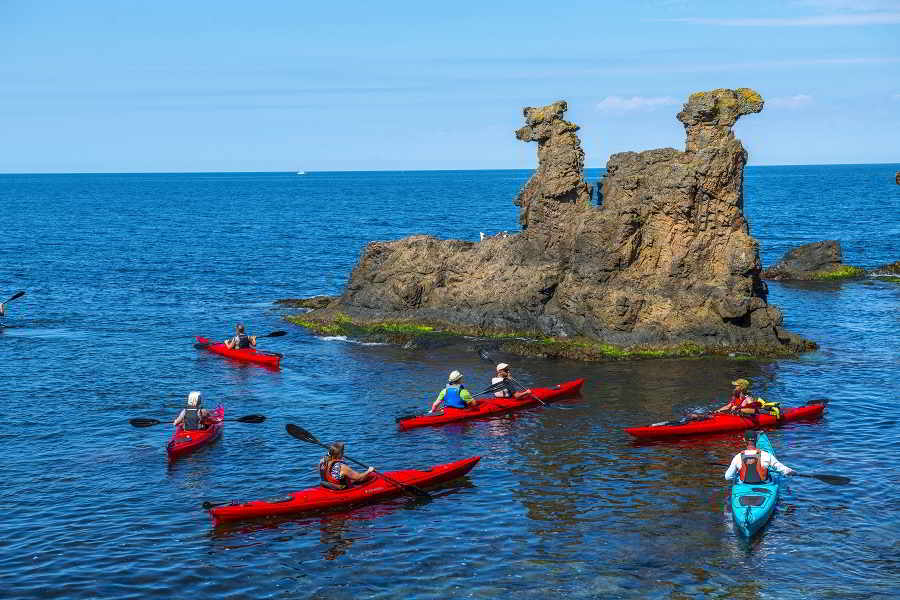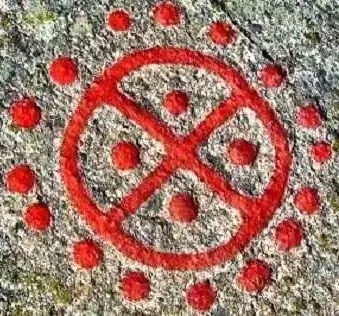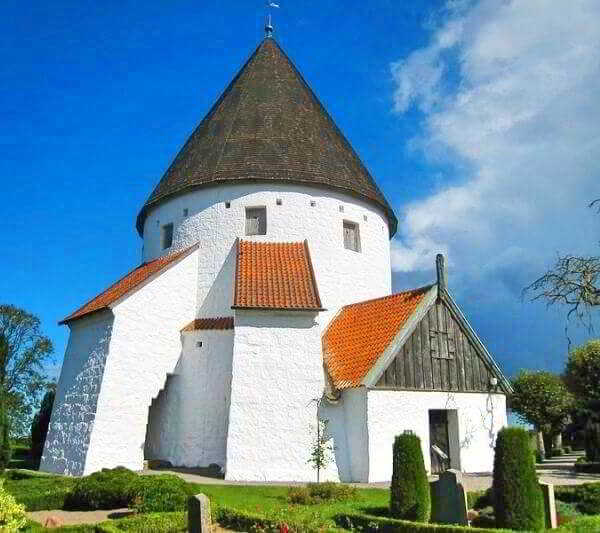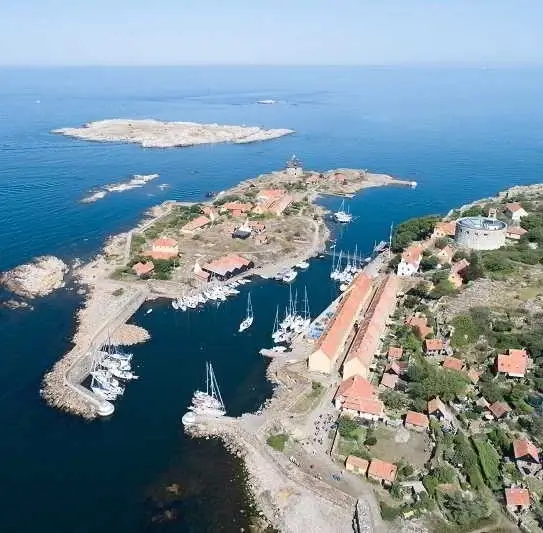 Bornholm Outdoor
Bornholm Outdoor
Plan your active outdoor holiday on Bornholm. Are you ready for a challenge? Your active holiday on Bornholm starts here, with activities for all ages and levels.
The island of Bornholm has a rich history dating back to the Viking Age and the Middle Ages, when it was an important strategic point in the Baltic Sea. Its past is full of remarkable events that have shaped the unique character of this picturesque island.

The island of Bornholm has an exceptionally rich history of human settlement, dating back as far as 9000–8000 BCE. During this period, the first people began inhabiting the area, taking advantage of a land connection that once linked the island with present-day Poland and Germany—an access that was eventually severed. As a result, Bornholm became an isolated island whose inhabitants had to adapt to new conditions.
Some of the earliest traces of settlement include a fortified camp from around 3500 BCE near present-day Aakirkeby. The preserved earthworks and fortifications suggest that early inhabitants not only defended themselves against threats but also developed agriculture and managed natural resources. Evidence of a growing culture can be seen in ritual rock carvings at Madsebakke and standing stones (menhirs) from the 13th to 9th centuries BCE, which are extraordinary testimonies to the spirituality and artistry of that era.
Bornholm was also a crossroads of various cultural influences—Germanic, Scandinavian, and Slavic—which together shaped the island’s unique identity. Today, the remnants of prehistoric settlements and artifacts attract researchers and tourists from around the world, eager to explore the island’s remarkable history and admire its natural beauty.
The Middle Ages on the island of Bornholm were marked by intense transformation, conflict, and cultural development, all of which left a lasting imprint on this Baltic gem. The first written mention of Bornholm—then known as Burgundarholm—dates back to 890 AD, when the island was inhabited by the Germanic Burgundians and later by the Vikings. From the 9th to the 12th century, Bornholm was the scene of fierce battles between the Germanic Danes and the Slavic Wends, who fought for control over the strategically located island.
One of the most iconic medieval landmarks on Bornholm is the group of four round churches—Nyker, Olsker, Nylars, and Østerlars. These unique buildings served both as places of worship and as fortresses offering refuge during times of conflict. Another powerful symbol of the island’s medieval era is the majestic Hammershus Castle, built around 1250 as the seat of the ecclesiastical authorities of the Archbishopric of Lund. In the central part of the island, in the Almindingen forest, stood the fortified stronghold of Lilleborg, a royal bastion that was ultimately destroyed during the many military clashes of the period.


The modern era on Bornholm was a time of dynamic political and economic changes that shaped the island in ways still visible today. In the 14th and 15th centuries, the island came under the influence of merchants from Lübeck, and in 1525 it formally passed into their control. However, in 1578, Danish King Frederick II regained authority over Bornholm. During the 17th century, the island became a battleground in the struggle between Denmark and Sweden. In 1645, the Swedes occupied Bornholm, but thanks to a local uprising led by figures such as Jens Kofoed and Poul Anker, Swedish forces were expelled. The Treaty of Copenhagen in 1660 officially returned Bornholm to the Danish Crown, and the island's residents were granted special royal privileges.
The 17th century also marked the beginning of natural resource exploitation, including stone and coal, which contributed to the island’s economic growth. Despite outbreaks of disease and the impact of the Napoleonic Wars, Bornholm continued to develop—especially through fishing and its increasing military significance. A major event during this time was the construction of the naval fortress on the island of Christiansø in 1684 by King Christian V, which remains under the jurisdiction of the Danish Ministry of Defence to this day.
In the 19th century, Bornholm’s economy flourished with the establishment of regular shipping lines between Copenhagen, Ystad, and Germany’s Rügen Island. The growth of ferry connections spurred the development of tourism, making Bornholm an increasingly popular travel destination.
During World War II, Bornholm witnessed both German occupation and the brutal toll of warfare, leaving a lasting impact on its residents. German forces occupied Bornholm on April 10, 1940, and began constructing fortifications in the southern part of the island, particularly around Dueodde, including heavy coastal artillery positions. Despite the occupation, life on Bornholm remained relatively calm, with only sporadic acts of resistance.
However, the bravery of Bornholm’s fishermen stands out in this dark chapter of history. Risking their lives, they played a vital role in helping Danish Jews escape to neutral Sweden, protecting them from deportation to Nazi extermination camps. These acts of heroism reflect the islanders’ unwavering sense of solidarity and humanity.
In the final days of the war, Bornholm became the site of active combat. In May 1945, Soviet air raids on the towns of Rønne and Nexø destroyed around 800 homes, leaving many families homeless. The German garrison, under the command of Gerhard von Kamptz, surrendered to the Red Army on May 9, 1945. Around 10,000 Soviet soldiers remained stationed on the island until April 1946.
A poignant reminder of those difficult times is the cemetery in Allinge, where 36 Soviet soldiers who died from illness on Bornholm are buried. After the war, Sweden generously aided in the island’s recovery by donating 300 wooden houses, which played a key role in the reconstruction of the war-damaged towns.


Bornholm, a picturesque island belonging to Denmark, has regained its charm and vitality after the difficult years of World War II, becoming a symbol of beauty and renewal. Thanks to the support of the Americans and neighboring Scandinavian countries, the war damage was quickly repaired, and the island soon began attracting visitors from around the world. Today, Bornholm is home to around 40,000 people who enjoy a high standard of living, an excellent social welfare system, and numerous modern conveniences.
Bornholm is truly a paradise for tourists. The island offers breathtaking scenery—from sandy beaches and dramatic cliffs to charming small towns. Tourism, now one of the island’s key economic sectors, is thriving and has gradually replaced the once-dominant fishing industry. Bornholm draws nature lovers and those seeking peace, tranquility, and an authentic connection with the natural world.
The island is also renowned for its unique cuisine, based on local ingredients and seasonal produce. On Bornholm, you can enjoy fresh seafood, cheeses, and regional specialties that are a true feast for the senses. Furthermore, Bornholm is a leader in sustainable development—making use of solar and wind energy, caring for the environment, and offering a model of harmony between people and nature.
Today, Bornholm is the perfect destination for both peaceful relaxation and active exploration of the island’s exceptional culture and nature.
Take a look at what else might interest you. Discover the charm and mystery of this sunny island. Yes, Bornholm is closer than you think...
 Bornholm Outdoor
Bornholm OutdoorPlan your active outdoor holiday on Bornholm. Are you ready for a challenge? Your active holiday on Bornholm starts here, with activities for all ages and levels.
One of the great things about Bornholm is the great variety of landscapes. Picturesque, majestic, steep granite cliffs in the north and fine sand beaches in the south, heathland, waterfalls, bearded garlic and anemones, coastal boulders and rocks.